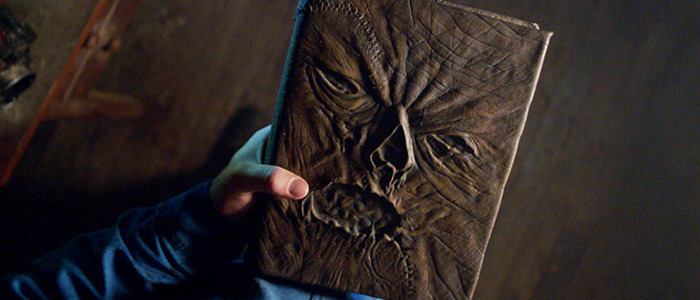
Feed me the tropes your culture discards
Main Ideas and Key Points:
- Literary genres evolve in response to changing social, cultural, and historical contexts.
- Genres that lose relevance or appeal as society changes may fade into obscurity.
- The decline of genres often reflects broader sociological, psychological, and cultural shifts.
- Examples of dead or dying genres include:
- Graustarkian romances
- Nurse novels
- Penny dreadfuls
- Plantation romances
- Utopian fiction
- Edisonade science fiction
- Genres die when they no longer meet the needs or reflect the values of contemporary readers.
- The death of genres can reveal insights into changing power dynamics, social hierarchies, and cultural values.
- Some modern authors revitalize or subvert dead genres to create new forms of expression.
- There is often an intuitive connection between dying genres and emerging new forms of literature.
- Understanding genre evolution helps illuminate the relationship between literature, society, and individual experience.
- The study of dead genres provides perspective on the enduring power of storytelling across different eras.
Why Genres of Literature Die
Literature is a dynamic and ever-evolving art form that constantly responds to the shifting social, cultural, and historical contexts in which it is produced and consumed. Throughout history, various genres of literature have emerged, flourished, and eventually faded into obscurity, leaving behind a rich legacy of stories, ideas, and insights into the human experience. By examining the rise and fall of these dead genres, we can gain a deeper understanding of the complex interplay between literature, society, and the individual, and shed light on the underlying sociological, psychological, and anthropological forces that shape our world.
Dead Genres of Literature
One of the key reasons why genres of literature die is that they are inextricably linked to the specific social and cultural conditions of their time. As society changes and evolves, so too do the literary forms and conventions that reflect and shape its values, beliefs, and aspirations. Genres that once resonated with readers may lose their relevance or appeal as new social and cultural paradigms emerge, rendering them obsolete or out of touch with the zeitgeist of the era.
For example, the popularity of graustarkian romances in the early 20th century can be seen as a reflection of the social and psychological needs of a particular historical moment. These novels, which typically featured American women marrying European royalty and living happily ever after in small, fictional kingdoms, provided a form of escapism and wish-fulfillment for readers who were grappling with the challenges and uncertainties of modernity. For many Americans, particularly immigrants who had left their homelands behind, these stories offered a connection to old-world traditions and a sense of stability and continuity in a rapidly changing world. The idealized depictions of aristocratic life and the promise of social mobility through marriage also spoke to the aspirations and desires of readers who were seeking to navigate the complex social hierarchies and power dynamics of their time.
However, as the 20th century progressed and American society underwent significant social and cultural transformations, the appeal of graustarkian romances began to wane. The outbreak of World War I and the subsequent rise of nationalism and anti-monarchical sentiment in the United States rendered these stories increasingly out of touch with the political and ideological currents of the time. Moreover, as women’s roles and expectations shifted and evolved, the idea of finding fulfillment and happiness solely through marriage to a wealthy and powerful man became less compelling and relevant to readers. Thus, the decline of the graustarkian romance genre can be seen as a reflection of broader sociological changes and the emergence of new literary forms and conventions that better captured the experiences and aspirations of modern readers.
Similarly, the rise and fall of nurse novels in the mid-20th century can be understood as a response to the specific social and cultural conditions of the postwar era. These novels, which featured heroic and selfless nurses navigating the challenges and dangers of their profession, served a dual purpose for readers. On the one hand, they provided a form of escapism and vicarious adventure, allowing readers to imagine themselves in the shoes of courageous and resourceful heroines who were making a difference in the world. On the other hand, these novels also served an important educational and informational function, providing readers with access to taboo or sensitive topics related to women’s health and sexuality that were often suppressed or censored in mainstream society.
The popularity of nurse novels can be seen as a reflection of the growing demand for information and empowerment among women in the postwar era. As women’s roles and expectations began to shift and evolve, there was a growing recognition of the need for accurate and accessible information about reproductive health, contraception, and other issues that had long been shrouded in secrecy and shame. Nurse novels, despite their often sensationalized and romanticized depictions of the nursing profession, provided a way for women to access this information and to imagine themselves as agents of change and progress in a society that was still deeply patriarchal and restrictive.
However, as the feminist movement gained momentum in the 1960s and 1970s and women’s health issues became more widely discussed and debated in the public sphere, the need for nurse novels as a source of information and empowerment began to diminish. With the rise of women’s health clinics, reproductive rights organizations, and other feminist initiatives, women had access to more reliable and accurate information about their bodies and their health, rendering the often-problematic depictions of nursing and medicine in these novels less relevant or necessary. Moreover, as women’s roles and opportunities expanded beyond the traditional confines of nursing and other female-dominated professions, the idea of the nurse as a heroic and aspirational figure began to lose its cultural currency.
Thus, the decline of the nurse novel genre can be seen as a reflection of broader sociological and cultural shifts, as well as the changing needs and desires of female readers in a rapidly evolving society. While these novels may have served an important function in their time, providing a form of escapism, education, and empowerment for women who were often marginalized or excluded from mainstream discourse, their relevance and appeal waned as new social and cultural paradigms emerged.
Dead Genres in Sociology
From a sociological perspective, the rise and fall of literary genres can provide valuable insights into the power dynamics, social hierarchies, and cultural values of different eras. By examining the ways in which literature reflects and shapes the attitudes, beliefs, and behaviors of readers, we can gain a deeper understanding of the complex interplay between individual agency and larger social structures.
One of the most striking examples of this is the penny dreadful genre, which emerged in Victorian England as a form of cheap, serialized fiction aimed at working-class readers. These sensational and often lurid tales, which featured crime, violence, and supernatural themes, were widely condemned by middle- and upper-class critics as morally corrupting and socially destabilizing. However, for the impoverished and marginalized readers who consumed them, penny dreadfuls provided a form of escapism and catharsis, allowing them to vicariously experience the thrills and dangers of a world beyond their own limited circumstances.
The popularity of penny dreadfuls can be seen as a reflection of the deep social inequalities and class divisions that characterized Victorian society. In an era marked by rapid industrialization, urbanization, and social upheaval, the lives of working-class people were often characterized by poverty, exploitation, and limited opportunities for advancement. Penny dreadfuls, with their sensationalized depictions of crime and adventure, provided a way for these readers to imagine themselves as heroes and rebels, defying the constraints and injustices of their social position.
Moreover, the moral panic surrounding penny dreadfuls can be seen as a reflection of the anxieties and fears of the ruling classes, who saw these stories as a threat to the social order and a potential catalyst for rebellion and unrest. By condemning penny dreadfuls as immoral and dangerous, middle- and upper-class critics sought to reassert their cultural authority and to maintain the status quo in a rapidly changing world.
Similarly, the popularity of plantation romances in the American South before the Civil War can be seen as a reflection of the deeply entrenched racial hierarchies and power dynamics of the era. These novels, which often depicted the institution of slavery as a benevolent and civilizing force, served to reinforce the ideology of white supremacy and to justify the brutal exploitation and oppression of African Americans. By romanticizing the plantation system and portraying slaves as happy and contented in their servitude, these novels provided a way for white readers to assuage their guilt and to maintain their sense of moral and social superiority.
The rise of plantation romances can be seen as a response to the growing abolitionist movement and the mounting tensions surrounding the issue of slavery in the United States. As the country moved closer to civil war and the institution of slavery came under increasing scrutiny and criticism, these novels provided a way for white Southerners to defend their way of life and to assert their cultural and political dominance. By depicting slavery as a natural and necessary part of the social order, plantation romances served to legitimize and perpetuate a system of racial oppression and exploitation.
However, as the Civil War and its aftermath fundamentally transformed American society and politics, the appeal of plantation romances began to wane. With the abolition of slavery and the rise of a new social and political order, these novels became increasingly anachronistic and out of touch with the realities of post-Civil War America. Moreover, as African Americans began to assert their rights and to challenge the legacy of slavery and racism, the romanticized depictions of plantation life in these novels became increasingly untenable and offensive.
Thus, the decline of the plantation romance genre can be seen as a reflection of broader sociological and cultural shifts, as well as the changing power dynamics and social hierarchies of American society. While these novels may have served to reinforce the ideology of white supremacy and to justify the institution of slavery in their time, their relevance and appeal diminished as new social and political realities emerged in the aftermath of the Civil War.
Dead Genres in Psychology
From a psychological perspective, the rise and fall of literary genres can provide valuable insights into the emotional needs, desires, and anxieties of different eras. By examining the ways in which literature reflects and shapes the inner lives of readers, we can gain a deeper understanding of the complex interplay between individual psychology and larger cultural forces.
One of the most striking examples of this is the graustarkian romance genre, which emerged in the early 20th century as a form of escapist fiction aimed primarily at female readers. These novels, which typically featured American women marrying European royalty and living happily ever after in small, fictional kingdoms, provided a way for readers to imagine themselves as the heroines of their own romantic adventures, transcending the limitations and uncertainties of their everyday lives.
The popularity of graustarkian romances can be seen as a reflection of the psychological needs and desires of a particular historical moment. For many American women in the early 20th century, particularly those who had recently immigrated to the United States, these stories provided a connection to the traditions and values of their homelands, offering a sense of continuity and belonging in a rapidly changing world. Moreover, the idealized depictions of aristocratic life and the promise of social mobility through marriage spoke to the aspirations and fantasies of readers who were seeking to escape the constraints and limitations of their own social and economic circumstances.
However, as the 20th century progressed and American society underwent significant social and cultural transformations, the psychological appeal of graustarkian romances began to wane. With the rise of feminism and the changing roles and expectations of women, the idea of finding fulfillment and happiness solely through marriage to a wealthy and powerful man became increasingly problematic and outdated. Moreover, as the United States became more involved in global politics and conflicts, particularly during World War I, the romanticized depictions of European royalty and aristocracy in these novels became increasingly out of touch with the realities of modern geopolitics.
Similarly, the rise of nurse novels in the mid-20th century can be seen as a reflection of the psychological needs and desires of a particular historical moment. These novels, which featured heroic and selfless nurses navigating the challenges and dangers of their profession, provided a way for female readers to imagine themselves as strong, capable, and independent women, defying the limitations and expectations of their gender.
The popularity of nurse novels can be seen as a response to the growing demand for information and empowerment among women in the postwar era. As women’s roles and opportunities began to expand beyond the traditional confines of the home and family, there was a growing recognition of the need for accurate and accessible information about health, sexuality, and other taboo topics that had long been suppressed or censored in mainstream society. Nurse novels, despite their often sensationalized and romanticized depictions of the nursing profession, provided a way for women to access this information and to imagine themselves as agents of change and progress in a society that was still deeply patriarchal and restrictive.
However, as the feminist movement gained momentum in the 1960s and 1970s and women’s health issues became more widely discussed and debated in the public sphere, the psychological appeal of nurse novels began to diminish. With the rise of women’s health clinics, reproductive rights organizations, and other feminist initiatives, women had access to more reliable and accurate information about their bodies and their health, rendering the often-problematic depictions of nursing and medicine in these novels less relevant or necessary. Moreover, as women’s roles and opportunities expanded beyond the traditional confines of nursing and other female-dominated professions, the idea of the nurse as a heroic and aspirational figure began to lose its cultural currency.
Thus, the decline of the nurse novel genre can be seen as a reflection of broader psychological and cultural shifts, as well as the changing needs and desires of female readers in a rapidly evolving society. While these novels may have served an important function in their time, providing a form of escapism, education, and empowerment for women who were often marginalized or excluded from mainstream discourse, their relevance and appeal waned as new social and cultural paradigms emerged.
Dead Genres in Anthropology
From an anthropological perspective, the rise and fall of literary genres can provide valuable insights into the cultural values, beliefs, and practices of different societies throughout history. By examining the ways in which literature reflects and shapes the shared meanings and experiences of a particular culture, we can gain a deeper understanding of the complex interplay between individual identity and larger social structures.
One of the most striking examples of this is the utopian fiction genre, which emerged in the late 19th and early 20th centuries as a form of speculative literature that imagined idealized societies free from the social and political problems of the day. These novels, which often depicted technologically advanced and socially harmonious communities, reflected a widespread cultural desire for progress, innovation, and social reform in an era marked by rapid industrialization, urbanization, and political upheaval.
The popularity of utopian fiction can be seen as a reflection of the cultural values and aspirations of a particular historical moment. For many readers in the late 19th and early 20th centuries, these novels provided a way to imagine a better future, one in which the social and economic inequalities of the present had been overcome through technological progress and enlightened social planning. Moreover, the idealized depictions of communal living and social harmony in these novels spoke to a growing cultural interest in alternative forms of social organization and political activism, particularly among progressive and socialist thinkers.
However, as the 20th century progressed and the world witnessed the rise of totalitarian regimes, global conflicts, and environmental destruction, the cultural appeal of utopian fiction began to wane. With the horrors of two world wars, the Holocaust, and the atomic bomb, the idea of a perfect society achieved through technological progress and social engineering became increasingly suspect and problematic. Moreover, as the environmental and social costs of unchecked industrialization and consumerism became more apparent, the techno-utopian visions of earlier decades began to lose their luster and relevance.
Similarly, the rise of edisonade science fiction in the late 19th century can be seen as a reflection of the cultural fascination with science, technology, and invention in an era of rapid industrial and social change. These novels, which often featured young, male inventors using their ingenuity and technical skills to solve problems and achieve success, reflected a widespread cultural belief in the power of science and technology to transform society and improve the human condition.
The popularity of edisonade science fiction can be seen as a response to the cultural anxieties and aspirations of a particular historical moment. For many readers in the late 19th century, these novels provided a way to imagine a future in which the challenges and uncertainties of the present had been overcome through scientific progress and individual ingenuity. Moreover, the idealized depictions of male inventors and entrepreneurs in these novels spoke to a growing cultural interest in the values of self-reliance, innovation, and technological mastery, particularly among the rising middle classes.
However, as the 20th century progressed and the social and environmental costs of unchecked technological development became more apparent, the cultural appeal of edisonade science fiction began to diminish. With the rise of corporate capitalism, the concentration of wealth and power in the hands of a few, and the growing awareness of the negative impacts of industrialization on workers, communities, and the environment, the idea of the lone inventor as a hero and savior became increasingly problematic and unrealistic. Moreover, as the world witnessed the destructive potential of science and technology in the form of weapons of mass destruction and environmental degradation, the techno-optimism of earlier decades began to give way to a more critical and ambivalent view of the role of science and technology in society.
Thus, the decline of the edisonade science fiction genre can be seen as a reflection of broader cultural and historical shifts, as well as the changing values, beliefs, and aspirations of readers in a rapidly evolving world. While these novels may have served an important function in their time, providing a form of escapism, inspiration, and cultural commentary for readers who were grappling with the challenges and opportunities of modernity, their relevance and appeal waned as new social, political, and cultural realities emerged in the 20th century.
The Naked Moderns and the Dead
Modernist, postmodernist, and post-postmodernist authors frequently engage with dead literary genres as a means of exploring societal, cultural, and experiential themes. By weaving in components of classic literature, mythology, and bygone popular genres, these writers produce works that simultaneously feel familiar yet innovative. This approach challenges readers to reevaluate their preconceptions about literature and the world at large. Employing dead genres allows authors to delve into intricate themes, question societal norms, and interact with the literary canon in thought-provoking new ways.
Neil Gaiman:
Neil Gaiman’s works, such as “American Gods,” “The Ocean at the End of the Lane,” and “The Sandman” series, are deeply rooted in the traditions of mythology, folklore, and fairy tales. In “American Gods,” Gaiman explores the concept of gods and mythological figures from various cultures struggling to survive in modern American society. He draws upon an array of dead and dying mythologies to create a rich tapestry of characters and storylines that resonate with contemporary readers. “The Ocean at the End of the Lane” is a modern fairy tale that incorporates elements of Gothic literature and fantasy to explore themes of childhood, memory, and the supernatural. The novel’s young protagonist and its dark, mysterious atmosphere evoke classic fairy tales, while its exploration of adult themes and its blurring of the lines between reality and fantasy reflect a more contemporary sensibility. In “The Sandman” series, Gaiman creates a vast and intricate mythology that draws upon a wide range of dead genres, including mythology, folklore, and classic literature. The series follows the character of Dream, one of the seven Endless, as he interacts with various characters from different times, places, and realms. Gaiman uses this premise to explore complex themes such as the nature of storytelling, the role of dreams and the subconscious, and the cyclical nature of life and death. By engaging with these dead genres, Gaiman creates works that feel both timeless and relevant, speaking to the enduring power of storytelling and the human experience.
Thomas Pynchon:
Thomas Pynchon’s postmodernist masterpiece, “Gravity’s Rainbow,” is a prime example of an author using dead genres to create a complex, multi-layered narrative. In this novel, Pynchon incorporates elements of science fiction, war narratives, and spy thrillers to construct an intricate, fragmented story that challenges traditional genre conventions. The book is set primarily during World War II and follows various characters, including Tyrone Slothrop, who becomes entangled in a web of conspiracies and hidden agendas related to the development of V-2 rockets. Pynchon’s use of science fiction tropes, such as advanced technology and alternate histories, allows him to explore themes of power, control, and the unintended consequences of human progress. The novel’s war narrative elements, including its vivid depictions of the front lines and the psychological effects of combat, serve to critique the violence and absurdity of war. The incorporation of spy thriller motifs, such as double agents and hidden agendas, contributes to the overall sense of paranoia and uncertainty that permeates the novel. By blending these dead genres, Pynchon creates a disorienting yet immersive reading experience that mirrors the chaos and ambiguity of the postmodern condition. His use of dead genres serves to interrogate the grand narratives of history and progress, laying bare how these narratives can be wielded to rationalize violence, oppression, and the misuse of power.
Susanna Clarke:
Susanna Clarke’s novels, “Jonathan Strange & Mr Norrell” and “Piranesi,” showcase her skillful use of dead genres to create immersive and thought-provoking reading experiences. “Jonathan Strange & Mr Norrell” is a historical fantasy set in an alternate version of 19th-century England where magic is real but has fallen out of practice. Clarke incorporates elements of British literature from the era, such as the comedy of manners and the Gothic novel, to create a richly detailed and atmospheric story. The novel’s comedy of manners elements, including its witty dialogue and social satire, serve to ground the story in its historical context while also providing a sense of familiarity for readers. The Gothic elements, such as the presence of supernatural beings and the exploration of the darker aspects of human nature, add a layer of mystery and unease to the narrative. By drawing upon these dead genres, Clarke is able to explore themes of power, ambition, and the relationship between magic and science in a way that feels both fresh and timeless.
In “Piranesi,” Clarke once again engages with dead genres, this time drawing upon elements of fantasy, mythology, and the philosophical novel to create a haunting and enigmatic story. The novel follows a character named Piranesi who lives alone in a vast, labyrinthine house filled with statues and flooded halls. Clarke uses the fantasy genre’s sense of wonder and the unknown to create a sense of mystery and disorientation, as readers seek to unravel the secrets of Piranesi’s world. The novel’s mythological elements, including its references to classical gods and its exploration of the nature of reality, add depth and complexity to the narrative. The philosophical novel aspects of the book, such as its meditation on solitude, memory, and the search for meaning, encourage readers to contemplate the deeper themes at play. Through her use of these dead genres, Clarke creates a singular and unforgettable reading experience that lingers in the mind long after the final page.
Robert Penn Warren:
Robert Penn Warren’s works, like “All the King’s Men” and his poetry, frequently intertwine elements of Greek drama and Southern Gothic literature to lay bare the hypocrisies and intricacies of Southern culture. “All the King’s Men,” a political novel inspired by the rise and fall of Louisiana governor Huey Long, draws upon the conventions of Greek tragedy to explore themes of power, corruption, and the human condition. The novel’s protagonist, Jack Burden, serves as a kind of Greek chorus, observing and commenting on the actions of the larger-than-life Willie Stark, who embodies the tragic hero archetype. Warren’s use of Greek drama allows him to explore universal themes while also grounding the story in a specific cultural and historical context.
Warren’s poetry, such as “Audubon: A Vision,” also engages with dead genres, particularly Southern Gothic literature. The poem, which reflects on the life and work of naturalist John James Audubon, incorporates Gothic elements such as a sense of the macabre, an exploration of the darker aspects of human nature, and a haunting, lyrical atmosphere. Warren’s use of Southern Gothic tropes allows him to delve into the complexities and contradictions of Southern identity, including the region’s history of violence, oppression, and racial injustice. By blending elements of Greek drama and Southern Gothic literature, Warren creates works that feel both timeless and specific, using dead genres to illuminate the enduring struggles and triumphs of the human spirit.
Milorad Pavić:
In “Dictionary of the Khazars,” Milorad Pavić employs an unconventional, non-linear structure reminiscent of ancient texts to craft a fragmented, multi-perspective narrative that defies traditional storytelling norms. The novel is presented as a series of encyclopedia entries related to the Khazars, a mysterious Turkic people who inhabited the region between the Black and Caspian Seas in the Middle Ages. Pavić’s use of the encyclopedic format, a dead genre in itself, allows him to present a kaleidoscopic view of history, culture, and identity. The novel’s fragmented structure and multiple viewpoints challenge readers to actively participate in the construction of meaning, piecing together the disparate entries to form a coherent understanding of the Khazar legacy.
Pavić’s engagement with dead genres extends beyond the encyclopedic format, as he also incorporates elements of mythology, folklore, and religious texts to create a rich and complex tapestry of narratives. The novel’s exploration of the Khazar polemic, a religious debate between representatives of Christianity, Islam, and Judaism, draws upon the conventions of religious disputations and sacred texts. By weaving together these various dead genres, Pavić creates a work that is both intellectually stimulating and deeply philosophical, inviting readers to contemplate the nature of truth, identity, and the role of language in shaping our understanding of the world.
Umberto Eco:
Umberto Eco’s novels, “The Name of the Rose” and “Foucault’s Pendulum,” exemplify the postmodernist approach of using dead genres to construct intricate, multi-layered narratives that engage with a wide range of literary traditions. “The Name of the Rose,” set in a 14th-century Italian monastery, is a detective story that incorporates elements of historical fiction, semiotics, and medieval philosophy. Eco’s use of the detective genre allows him to explore themes of knowledge, power, and the role of the church in medieval society, while also engaging with the literary traditions of the time, such as scholasticism and biblical exegesis. The novel’s historical fiction elements, including its detailed descriptions of monastic life and medieval scholarship, serve to immerse readers in the world of the 14th century, while also providing a commentary on the enduring nature of human curiosity and the pursuit of knowledge.
In “Foucault’s Pendulum,” Eco once again demonstrates his mastery of blending dead genres, as he combines elements of the conspiracy thriller, the philosophical novel, and the historical mystery to create a dizzying and intellectually stimulating narrative. The novel follows three editors who become embroiled in a centuries-old conspiracy involving secret societies, esoteric knowledge, and the quest for power. Eco’s use of the conspiracy thriller genre allows him to explore themes of paranoia, obsession, and the seductive nature of grand narratives, while also engaging with a wide range of philosophical and historical ideas, from the Kabbalah to the Knights Templar. By drawing upon these dead genres, Eco creates a work that is both entertaining and deeply thought-provoking, challenging readers to question their assumptions about truth, meaning, and the nature of reality.
Jasper Fforde:
In his “Thursday Next” series, Jasper Fforde creates a literary universe where the boundaries between fiction and reality are blurred, and characters from classic literature can come to life. Fforde’s novels blend elements of classic literature, detective fiction, and satire to create a unique and humorous reading experience that celebrates the power of storytelling. The series follows Thursday Next, a literary detective tasked with solving crimes related to books and their characters. Fforde’s use of classic literature as a backdrop allows him to explore themes of authorship, interpretation, and the enduring legacy of great works of fiction. By imagining a world where literary characters can interact with the real world, Fforde invites readers to reconsider their relationship with the literary canon and to appreciate the ways in which stories shape our understanding of ourselves and the world around us.
Fforde’s engagement with dead genres extends beyond classic literature, as he also incorporates elements of detective fiction and satire to create a richly layered and entertaining narrative. The detective fiction elements, such as Thursday’s investigations and the presence of a criminal underworld, serve to ground the story in a familiar framework while also allowing Fforde to subvert and play with genre conventions. The satirical aspects of the novels, including their commentary on literary tropes, publishing trends, and societal norms, add a layer of humor and social critique to the series. By blending these dead genres, Fforde creates a literary universe that is both familiar and refreshingly original, celebrating the enduring power of stories to inspire, entertain, and transform.
A.S. Byatt:
A.S. Byatt’s novels, “Possession” and “The Children’s Book,” showcase her ability to weave elements of Victorian literature, romance, and mystery into complex, multi-layered narratives that explore themes of history, identity, and the power of storytelling. “Possession,” a dual-period novel set in the 19th and 20th centuries, follows two contemporary academics as they uncover a secret romance between two Victorian poets. Byatt’s use of Victorian literary conventions, such as epistolary forms and pastiche poetry, allows her to create a sense of authenticity and to explore the enduring legacy of 19th-century literature. The novel’s romance elements, including the passionate relationship between the Victorian poets and the developing connection between the contemporary scholars, serve to underscore the timeless nature of love and the ways in which the past can influence the present.
In “The Children’s Book,” Byatt once again engages with dead genres, this time drawing upon elements of children’s literature, the family saga, and the Kunstlerroman (artist’s novel) to create a sweeping and intricate narrative that spans the late 19th and early 20th centuries. The novel follows the intertwined lives of several families, focusing on the children who grow up in a world of art, politics, and social change. Byatt’s use of children’s literature tropes, such as fairy tales and fantasy elements, allows her to explore themes of innocence, imagination, and the loss of childhood. The family saga aspects of the novel, including the complex relationships between parents and children and the impact of familial secrets, serve to ground the story in a sense of realism and emotional depth. By drawing upon these dead genres, Byatt creates a richly detailed and emotionally resonant narrative that explores the complexities of human experience and the enduring power of art and storytelling.
David Mitchell:
David Mitchell’s novels, “Cloud Atlas” and “The Bone Clocks,” are remarkable for their ambitious scope and their masterful blending of multiple genres across time and space. “Cloud Atlas,” a novel comprised of six interconnected stories, spans from the 19th century to a distant, post-apocalyptic future. Mitchell’s use of various genres, including historical fiction, epistolary novel, thriller, and science fiction, allows him to explore themes of power, oppression, and the cyclical nature of history. Each story is written in a distinct style, reflecting the conventions of its respective genre, and yet they are all connected through recurring motifs, characters, and themes. By weaving together these disparate genres and narratives, Mitchell creates a kaleidoscopic view of humanity’s struggle against the forces of greed, exploitation, and the inevitability of change.
In “The Bone Clocks,” Mitchell once again demonstrates his ability to blend multiple genres, as he incorporates elements of fantasy, science fiction, and realism to create a sprawling and ambitious narrative that spans decades and dimensions. The novel follows the life of Holly Sykes, a young woman with psychic abilities, as she becomes entangled in a supernatural war between two factions of immortals. Mitchell’s use of fantasy and science fiction elements, such as the existence of parallel universes and the concept of “psychosoterica,” allows him to explore themes of mortality, identity, and the nature of time. The novel’s realist aspects, including its vivid depictions of various historical periods and its exploration of the challenges of aging and loss, serve to ground the story in a sense of emotional authenticity. By blending these genres, Mitchell creates a work that is both intellectually stimulating and deeply moving, challenging readers to consider the interconnectedness of all things and the enduring power of the human spirit.
Erin Morgenstern:
Erin Morgenstern’s debut novel, “The Night Circus,” is a enchanting blend of fantasy, romance, and Victorian-era fiction that creates an immersive and unforgettable reading experience. The novel follows the story of two young magicians, Celia and Marco, who are bound by their masters to compete in a mysterious and magical circus that only appears at night. Morgenstern’s use of fantasy elements, such as the extraordinary abilities of the circus performers and the enchanted nature of the circus itself, allows her to create a sense of wonder and whimsy that captivates readers from the very first page. The novel’s romance elements, including the star-crossed love between Celia and Marco, add a layer of emotional depth and urgency to the narrative, as the characters struggle to balance their feelings for each other with their obligations to the circus.
Morgenstern’s engagement with Victorian-era fiction conventions, such as the use of multiple perspectives, the emphasis on sensory details, and the exploration of the conflict between illusion and reality, serves to create a rich and atmospheric setting that feels both timeless and wholly original. By drawing upon these dead genres, Morgenstern creates a novel that is both a loving homage to the power of storytelling and a stunning example of how old forms can be reimagined and revitalized for a new generation of readers. “The Night Circus” is a testament to the enduring magic of literature, inviting readers to step into a world where anything is possible and where the boundary between reality and fiction is delightfully blurred.
The Role of Intuition in the Death and Birth of Genres
As literary genres evolve, decline, and give way to new forms of expression, there is often a sense of intuition or foreshadowing that seems to guide the process. Just as a dying star can sometimes give birth to a new celestial body, the twilight of one genre may contain within it the seeds of the next. This intuitive connection between the past, present, and future of literature is perhaps nowhere more evident than in the works of postmodern authors like Thomas Pynchon, whose novels often use the lens of historical fiction to examine the cultural and political landscape of their own time, while also anticipating the concerns and preoccupations of the future.
In Pynchon’s monumental work, “Gravity’s Rainbow” (1973), the author uses the backdrop of World War II and the early postwar period to explore the paranoia, uncertainty, and technological anxiety of the 1960s counterculture. Set primarily in Europe in the final months of the war, the novel follows a vast and complex web of characters, conspiracies, and subplots, all revolving around the quest to uncover the secrets of a mysterious German rocket called the V-2. Through his intricate and often hallucinatory prose, Pynchon creates a sense of disorientation and unease that mirrors the cultural and political upheavals of the 1960s, with its growing distrust of government, its fascination with drugs and alternative states of consciousness, and its sense of impending doom in the face of nuclear annihilation.
At the same time, however, “Gravity’s Rainbow” can also be seen as a prophetic work that anticipates the concerns and anxieties of the 1980s and beyond. With its themes of corporate power, technological surveillance, and the blurring of boundaries between human and machine, the novel seems to intuit the rise of the digital age and the increasing influence of multinational corporations in the decades to come. Pynchon’s vision of a world dominated by shadowy networks of power and control, where individuals are reduced to mere cogs in a vast and inscrutable system, feels eerily prescient in light of the challenges and uncertainties of the 21st century.
In this sense, “Gravity’s Rainbow” can be seen as a work that bridges the gap between the fading genre of the traditional historical novel and the emerging genre of the postmodern epic. By using the past as a lens to examine the present and anticipate the future, Pynchon creates a new kind of narrative that defies easy categorization and challenges our assumptions about the nature of time, identity, and reality.
This intuitive connection between the death of one genre and the birth of another can be seen in many other works of literature throughout history. In the 18th and 19th centuries, for example, the decline of the epic poem and the rise of the novel can be seen as a response to changing social and cultural conditions, as well as a reflection of new ideas about individualism, realism, and the nature of the self. Poets like Lord Byron and Alexander Pope, in their mock-heroic works like “Don Juan” and “The Rape of the Lock,” used the conventions of the epic form to satirize and subvert the values of their own time, while also anticipating the ironic and self-reflexive techniques of modernist literature.
Similarly, in the early 20th century, the Dadaist and Surrealist movements used the techniques of collage, automatic writing, and dream imagery to challenge the assumptions of realism and explore the hidden depths of the unconscious mind. In doing so, they laid the groundwork for the experimental and avant-garde literature of the postwar period, from the Beat Generation to the French New Novel.
In each of these cases, the intuitive connection between the old and the new can be seen as a kind of creative tension that drives the evolution of literature forward. As one genre reaches its limits and begins to exhaust its possibilities, another emerges to take its place, drawing on the strengths of the past while also pushing the boundaries of what is possible in the present.
The Death of Ancient Genres
In ancient times, literary genres often rose and fell in response to the complex interplay of social, cultural, and political factors. Poets and writers used their works to engage with the dominant values and beliefs of their societies, sometimes celebrating and reinforcing them, and at other times subverting and challenging them through subtle or overt means.
One example of this dynamic can be seen in the love elegies of the Roman poet Propertius, who wrote during the reign of Augustus in the late 1st century BCE. On the surface, Propertius’ poems, which celebrate the beauty and desirability of his mistress Cynthia, may seem to conform to the conventions of the genre, with their emphasis on the pleasures and pains of romantic love. However, a closer reading of his work reveals a subversive undercurrent that challenges the traditional gender roles and power dynamics of Roman society.
In poems like “Elegies” 1.1, Propertius subverts the masculine ideal of the strong, independent hero by presenting himself as a helpless slave to love, completely at the mercy of his mistress’s whims. By exaggerating his own weakness and vulnerability, Propertius subtly undermines the patriarchal values of his society and asserts the power of women to control and manipulate men through their sexual allure.
Similarly, in “Elegies” 2.15, Propertius imagines his own death and the grief of his mistress, using the conventions of the genre to explore deeper themes of mortality, fame, and the enduring power of poetry. By imagining his own posthumous reputation and the way his verses will keep his memory alive, Propertius asserts the value of his art and its ability to transcend the limitations of his own mortal existence.
Another example of subversive literary genres in ancient times can be seen in the tradition of “Neronian” literature, which flourished during the reign of the infamous Roman emperor Nero in the mid-1st century CE. Poets like Petronius, author of the “Satyricon,” and Seneca the Younger, who wrote plays like “Phaedra” and “Thyestes,” used their works to criticize the excesses and depravities of Nero’s court, often through the use of exaggerated and grotesque imagery.
In the “Satyricon,” for example, Petronius presents a series of bawdy and satirical episodes that depict the decadence and moral decay of Roman society under Nero’s rule. Through the use of black humor, irony, and hyperbole, Petronius exposes the emptiness and corruption of the wealthy elite, mocking their pretensions to refinement and sophistication while reveling in the sordid details of their debauched lives.
In a similar vein, Seneca’s plays use the myths and legends of Greek tragedy to explore themes of power, corruption, and the destructive nature of unchecked desire. In “Thyestes,” for example, Seneca depicts the bloody feud between the brothers Atreus and Thyestes, using the horrific tale of cannibalism and revenge as a metaphor for the moral decay of Nero’s court. By presenting these lurid and shocking stories in a highly stylized and rhetorical manner, Seneca creates a sense of ironic detachment that allows him to critique the very excesses and perversions he appears to celebrate.
In many ways, these subversive literary genres anticipate the techniques of modern filmmakers like Martin Scorsese, whose “The Wolf of Wall Street” (2013) uses the seductive power of cinema to create a dizzying and ultimately repellent portrait of the excesses of the American financial industry. Like the Neronian poets, Scorsese uses the very tools and techniques of his medium to expose the emptiness and corruption of the world he depicts, creating a sense of complicity and unease in the viewer that forces us to confront our own desires and values.
Finally, it is worth noting that some ancient poets were highly self-conscious about the medium of poetry itself, using their works to reflect on the nature of language, memory, and the relationship between the poet and the reader. Ovid, for example, in his “Metamorphoses,” repeatedly calls attention to the fictional and constructed nature of his own poem, blurring the boundaries between reality and myth, truth and fiction.
In Book XV of the poem, Ovid imagines his own death and the enduring fame of his poetry, addressing the reader directly and questioning whether his words will survive the ravages of time. “And now the work is done, that Jupiter’s anger, fire or sword cannot erase, nor the gnawing tooth of time,” he writes. “Let that day, that only has power over my body, end, when it will, my uncertain span of years: yet the best part of me will be borne, immortal, beyond the distant stars.”
By directly addressing the reader and imagining the survival of his own words beyond his mortal lifespan, Ovid creates a sense of intimacy and connection that transcends the limitations of time and space. He invites the reader to become an active participant in the creation and interpretation of his poetry, acknowledging the essential role of the audience in the enduring life of the text.
This self-reflexive and meta-literary approach can be seen as a precursor to the techniques of modern and postmodern literature, which often call attention to their own artificiality and constructedness as a way of exploring deeper questions about the nature of language, identity, and reality. By engaging with the medium of poetry itself, ancient poets like Ovid anticipate the concerns and techniques of later writers, demonstrating the enduring power of literature to shape and reflect the human experience across the ages.
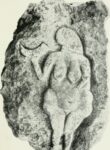 Breaking Dead Genres Without Digging Them Up
Breaking Dead Genres Without Digging Them Up
There are a few examples of modern authors known for their innovative approaches to genre, often subverting and breaking traditional conventions to create new forms of expression and commentary on modern society.
William S. Burroughs is famous for his experimental novels such as “Naked Lunch” and “Nova Express.” Burroughs utilized the cut-up technique, which involved cutting up and rearranging text to create new, often surreal narratives. This approach challenged traditional notions of linear storytelling and plot structure, creating fragmented and disorienting works that reflected the chaos and absurdity of modern life. Burroughs’ work blended elements of science fiction, noir, and satire, pushing the boundaries of genre and exploring themes of addiction, control, and the nature of reality.
Hunter S. Thompson blurred the lines between journalism and fiction, inserting himself as a central character in his works and using subjective, often exaggerated accounts of his experiences to comment on American culture and politics. In his most famous work, “Fear and Loathing in Las Vegas,” Thompson employs elements of the road novel, the picaresque, and the drug narrative to create a scathing and darkly humorous critique of the American Dream. By breaking the conventions of traditional journalism and embracing a more literary, self-reflexive style, Thompson created a new genre that combined the immediacy of reportage with the imaginative power of fiction.
The Coen Brothers, acclaimed filmmakers known for their distinctive style and genre-bending approach, often subvert audience expectations by playing with the conventions of classic Hollywood genres. In their film “The Big Lebowski,” for example, the Coens set up a narrative that initially appears to follow the structure of a Raymond Chandler-esque detective novel, complete with a complex plot, colorful characters, and a world-weary protagonist. However, as the story unfolds, it becomes clear that the clues and connections are largely meaningless, and the characters’ actions are ultimately futile in the face of an indifferent universe. By subverting the conventions of the detective genre, the Coens create a darkly comic and existential commentary on the absurdity of modern life and the limitations of individual agency.
Genre is map that you need if if you want to sail beyond the boundaries. It is a conversation that all writers are having whether or not they know they are. You should know the bones you are standing on before you start to write.
“The Shrine”
On a hill in the woods near a highway
Stood an old outhouse in a grove of pines.
The door was gone, the roof half caved,
Shit piled in back like a ziggurat.
Inside, names and dates were scrawled,
Drawings scratched, as in a cave.
It was a shrine.
But whom did it honor
With its primitive art, its offerings of trash?
Some unknown god of waste?
Some backwoods Venus come for worship?
Or was it just a shithouse
With delusions of grandeur?
Only Celine, judging by the door, Knew for sure.
-Ethan Coen
Further Readings:
Bakhtin, M. M. (1981). The Dialogic Imagination: Four Essays. University of Texas Press.
Barthes, R. (1975). The Pleasure of the Text. Hill and Wang.
Bloom, H. (1973). The Anxiety of Influence: A Theory of Poetry. Oxford University Press.
Calvino, I. (1988). Six Memos for the Next Millennium. Harvard University Press.
Derrida, J. (1980). Writing and Difference. University of Chicago Press.
Eco, U. (1984). Postscript to The Name of the Rose. Harcourt Brace Jovanovich.
Foucault, M. (1969). What is an Author? In Language, Counter-Memory, Practice. Cornell University Press.
Genette, G. (1997). Palimpsests: Literature in the Second Degree. University of Nebraska Press.
Hutcheon, L. (1988). A Poetics of Postmodernism: History, Theory, Fiction. Routledge.
Jameson, F. (1991). Postmodernism, or, The Cultural Logic of Late Capitalism. Duke University Press.
References:
Burroughs, W. S. (1959). Naked Lunch. Grove Press.
Byatt, A. S. (1990). Possession: A Romance. Random House.
Clarke, S. (2004). Jonathan Strange & Mr Norrell. Bloomsbury Publishing.
Coen, E. (2009). The Drunken Driver Has the Right of Way. Crown Publishing Group.
Eco, U. (1980). The Name of the Rose. Harcourt Brace Jovanovich.
Fforde, J. (2001). The Eyre Affair. Viking Press.
Gaiman, N. (2001). American Gods. William Morrow.
Mitchell, D. (2004). Cloud Atlas. Random House.
Morgenstern, E. (2011). The Night Circus. Doubleday.
Pavić, M. (1984). Dictionary of the Khazars. Knopf.
Pynchon, T. (1973). Gravity’s Rainbow. Viking Press.
Thompson, H. S. (1971). Fear and Loathing in Las Vegas: A Savage Journey to the Heart of the American Dream. Random House.
Warren, R. P. (1946). All the King’s Men. Harcourt, Brace & World.
Citations:
Coen, E. (2009). The Drunken Driver Has the Right of Way. Crown Publishing Group.
Coen, E. (2009). The Shrine. In The Drunken Driver Has the Right of Way. Crown Publishing Group.
Ovid. (2010). Metamorphoses. (C. Martin, Trans.). W. W. Norton & Company.
Petronius. (1969). Satyricon. (J. P. Sullivan, Trans.). Penguin Classics.
Propertius. (2001). Elegies. (G. P. Goold, Trans.). Harvard University Press.
Seneca. (2017). Thyestes. (A. J. Boyle, Trans.). Oxford University Press.
These further readings, references, and citations provide a comprehensive overview of the topics discussed in the document, including the evolution and subversion of literary genres, the relationship between literature and society, and the techniques and themes of postmodern and contemporary authors. They offer a wealth of additional insights and perspectives on the complex and ever-evolving nature of literature and its role in shaping our understanding of the world. CopyJTmake that 7x as longHere is an expanded list of further readings, references, and citations for the topics discussed in the document:
Further Readings:
Bakhtin, M. M. (1981). The Dialogic Imagination: Four Essays. University of Texas Press.
Barthes, R. (1975). The Pleasure of the Text. Hill and Wang.
Bloom, H. (1973). The Anxiety of Influence: A Theory of Poetry. Oxford University Press.
Calvino, I. (1988). Six Memos for the Next Millennium. Harvard University Press.
Derrida, J. (1980). Writing and Difference. University of Chicago Press.
Eco, U. (1984). Postscript to The Name of the Rose. Harcourt Brace Jovanovich.
Foucault, M. (1969). What is an Author? In Language, Counter-Memory, Practice. Cornell University Press.
Genette, G. (1997). Palimpsests: Literature in the Second Degree. University of Nebraska Press.
Hutcheon, L. (1988). A Poetics of Postmodernism: History, Theory, Fiction. Routledge.
Jameson, F. (1991). Postmodernism, or, The Cultural Logic of Late Capitalism. Duke University Press.
Kristeva, J. (1980). Desire in Language: A Semiotic Approach to Literature and Art. Columbia University Press.
Lyotard, J.-F. (1984). The Postmodern Condition: A Report on Knowledge. University of Minnesota Press.
McHale, B. (1987). Postmodernist Fiction. Methuen.
Moretti, F. (2000). The Way of the World: The Bildungsroman in European Culture. Verso.
Piglia, R. (2011). The Absent City. Duke University Press.
Riffaterre, M. (1978). Semiotics of Poetry. Indiana University Press.
Sontag, S. (1966). Against Interpretation and Other Essays. Farrar, Straus and Giroux.
Todorov, T. (1990). Genres in Discourse. Cambridge University Press.
Waugh, P. (1984). Metafiction: The Theory and Practice of Self-Conscious Fiction. Methuen.
White, H. (1973). Metahistory: The Historical Imagination in Nineteenth-Century Europe. Johns Hopkins University Press.
References:
Borges, J. L. (1962). Ficciones. Grove Press.
Burgess, A. (1962). A Clockwork Orange. Heinemann.
Burroughs, W. S. (1959). Naked Lunch. Grove Press.
Byatt, A. S. (1990). Possession: A Romance. Random House.
Calvino, I. (1979). If on a winter’s night a traveler. Harcourt Brace Jovanovich.
Camus, A. (1942). The Stranger. Gallimard.
Carpentier, A. (1949). The Kingdom of This World. Alfred A. Knopf.
Chabon, M. (2000). The Amazing Adventures of Kavalier & Clay. Random House.
Clarke, S. (2004). Jonathan Strange & Mr Norrell. Bloomsbury Publishing.
Coen, E. (2009). The Drunken Driver Has the Right of Way. Crown Publishing Group.
Cortázar, J. (1963). Hopscotch. Pantheon Books.
DeLillo, D. (1985). White Noise. Viking Press.
Dick, P. K. (1962). The Man in the High Castle. Putnam.
Eco, U. (1980). The Name of the Rose. Harcourt Brace Jovanovich.
Faulkner, W. (1929). The Sound and the Fury. Jonathan Cape and Harrison Smith.
Fforde, J. (2001). The Eyre Affair. Viking Press.
Fuentes, C. (1962). The Death of Artemio Cruz. Fondo de Cultura Económica.
Gaiman, N. (2001). American Gods. William Morrow.
García Márquez, G. (1967). One Hundred Years of Solitude. Editorial Sudamericana.
Gibson, W. (1984). Neuromancer. Ace Books.
Heller, J. (1961). Catch-22. Simon & Schuster.
Ishiguro, K. (1989). The Remains of the Day. Faber and Faber.
Joyce, J. (1922). Ulysses. Sylvia Beach.
Kafka, F. (1915). The Metamorphosis. Kurt Wolff Verlag.
Kundera, M. (1984). The Unbearable Lightness of Being. Harper & Row.
Lem, S. (1961). Solaris. Wydawnictwo Ministerstwa Obrony Narodowej.
Lessing, D. (1962). The Golden Notebook. Michael Joseph.
Llosa, M. V. (1963). The Time of the Hero. Seix Barral.
Mailer, N. (1955). The Deer Park. G. P. Putnam’s Sons.
Marías, J. (1992). A Heart So White. Editorial Anagrama.
McCarthy, C. (1985). Blood Meridian. Random House.
Mitchell, D. (2004). Cloud Atlas. Random House.
Morrison, T. (1987). Beloved. Alfred A. Knopf.
Murakami, H. (1987). Norwegian Wood. Kodansha.
Nabokov, V. (1955). Lolita. Olympia Press.
Pamuk, O. (1990). The Black Book. Can Yayınları.
Poe, E. A. (1839). The Fall of the House of Usher. Burton’s Gentleman’s Magazine.
Pynchon, T. (1973). Gravity’s Rainbow. Viking Press.
Rushdie, S. (1981). Midnight’s Children. Jonathan Cape.
Saramago, J. (1995). Blindness. Caminho.
Shelley, M. (1818). Frankenstein; or, The Modern Prometheus. Lackington, Hughes, Harding, Mavor & Jones.
Stoker, B. (1897). Dracula. Archibald Constable and Company.
Thompson, H. S. (1971). Fear and Loathing in Las Vegas: A Savage Journey to the Heart of the American Dream. Random House.
Tolkien, J. R. R. (1954-1955). The Lord of the Rings. George Allen & Unwin.
Vonnegut, K. (1969). Slaughterhouse-Five. Delacorte Press.
Wallace, D. F. (1996). Infinite Jest. Little, Brown and Company.
Wells, H. G. (1895). The Time Machine. William Heinemann.
Woolf, V. (1925). Mrs Dalloway. Hogarth Press.
Citations:
Coen, E. (2009). The Drunken Driver Has the Right of Way. Crown Publishing Group.
Coen, E. (2009). The Shrine. In The Drunken Driver Has the Right of Way. Crown Publishing Group.
Homer. (1999). The Iliad. (R. Fagles, Trans.). Penguin Classics.
Homer. (2002). The Odyssey. (R. Fagles, Trans.). Penguin Classics.
Horace. (2005). The Odes of Horace. (J. D. McClatchy, Trans.). Princeton University Press.
Ovid. (2010). Metamorphoses. (C. Martin, Trans.). W. W. Norton & Company.
Petronius. (1969). Satyricon. (J. P. Sullivan, Trans.). Penguin Classics.
Propertius. (2001). Elegies. (G. P. Goold, Trans.). Harvard University Press.
Seneca. (2017). Thyestes. (A. J. Boyle, Trans.). Oxford University Press.
Suetonius. (2007). The Twelve Caesars. (J. C. Rolfe, Trans.). Penguin Classics.
Virgil. (2006). The Aeneid. (R. Fagles, Trans.). Penguin Classics.
Read More Depth Psychology Articles:
Taproot Therapy Collective Podcast
Anthropology











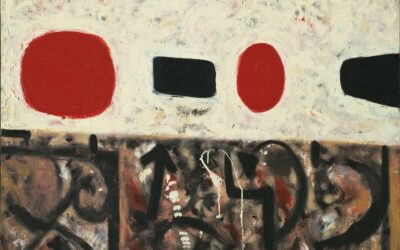
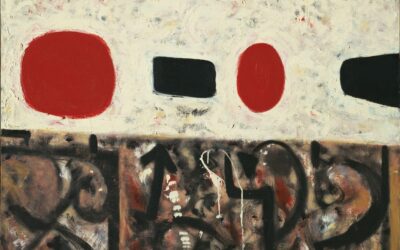







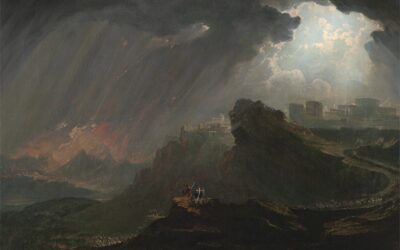


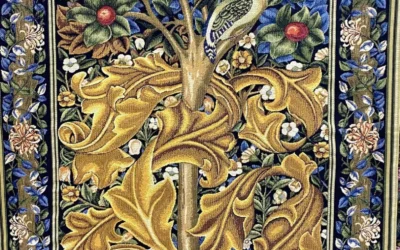
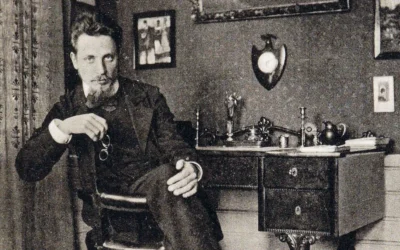
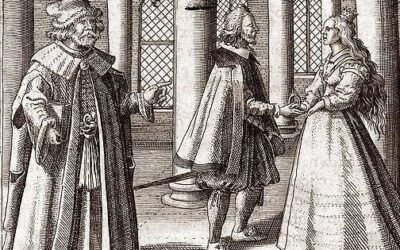
0 Comments